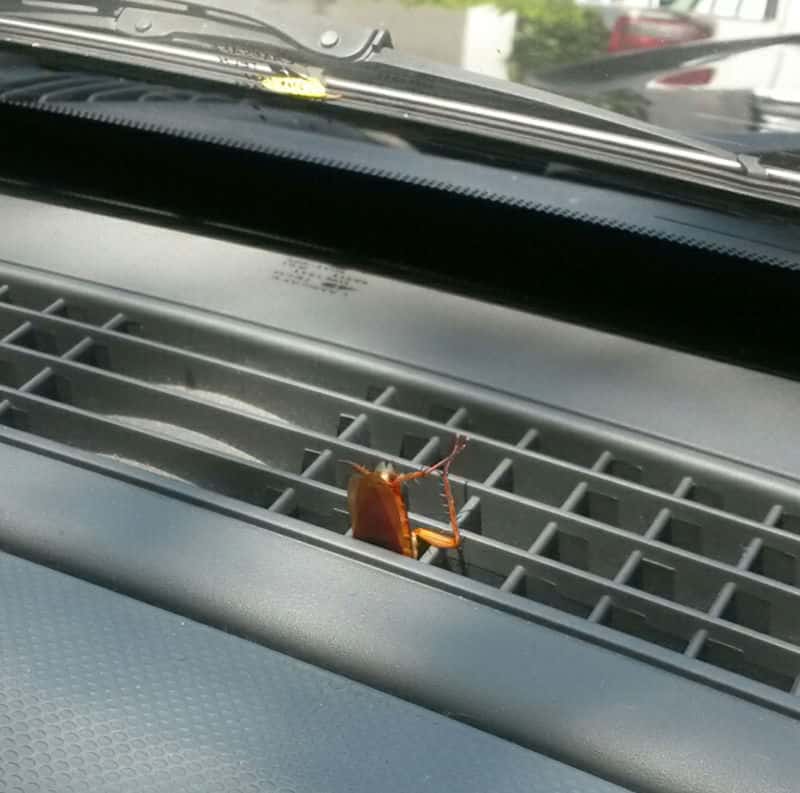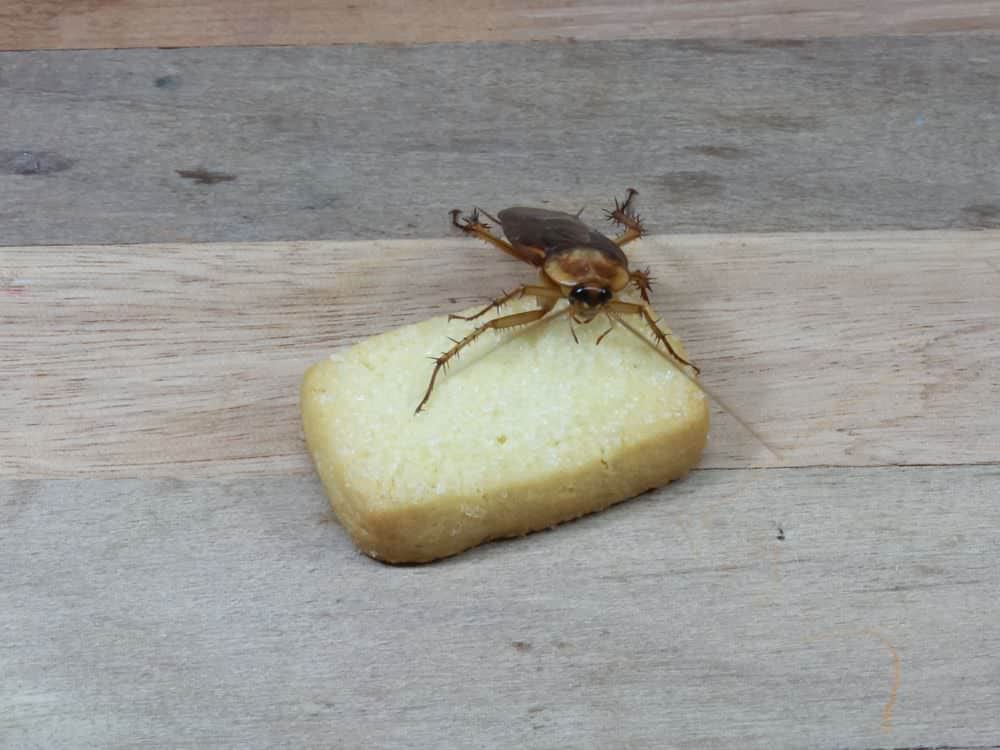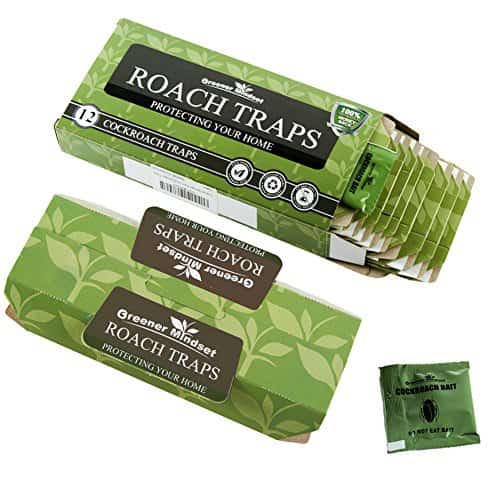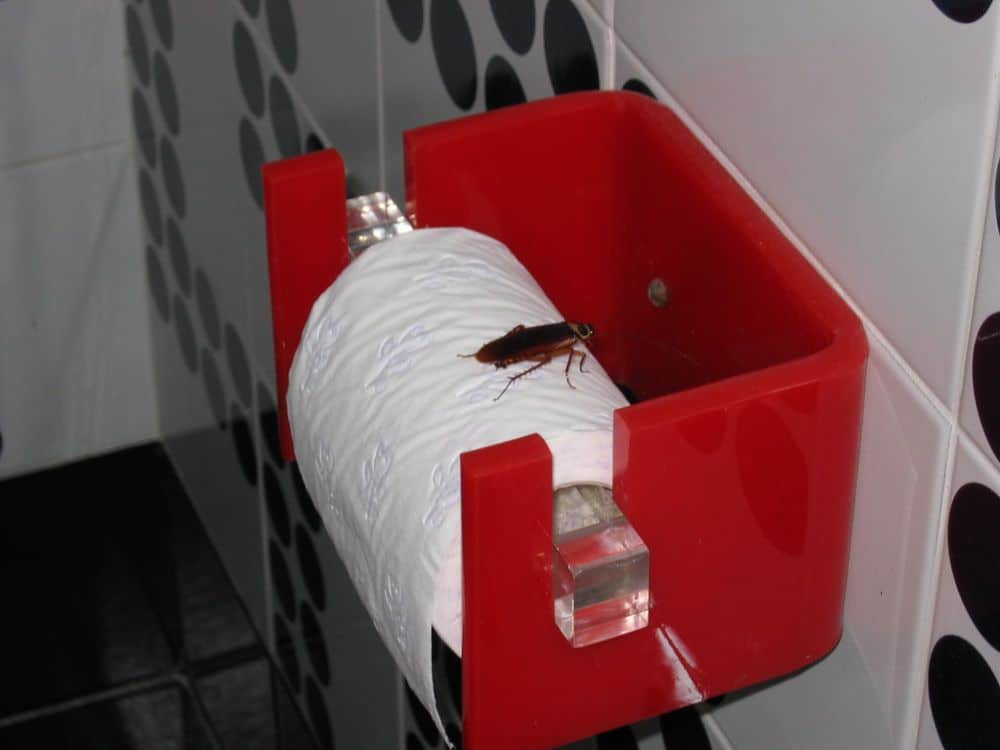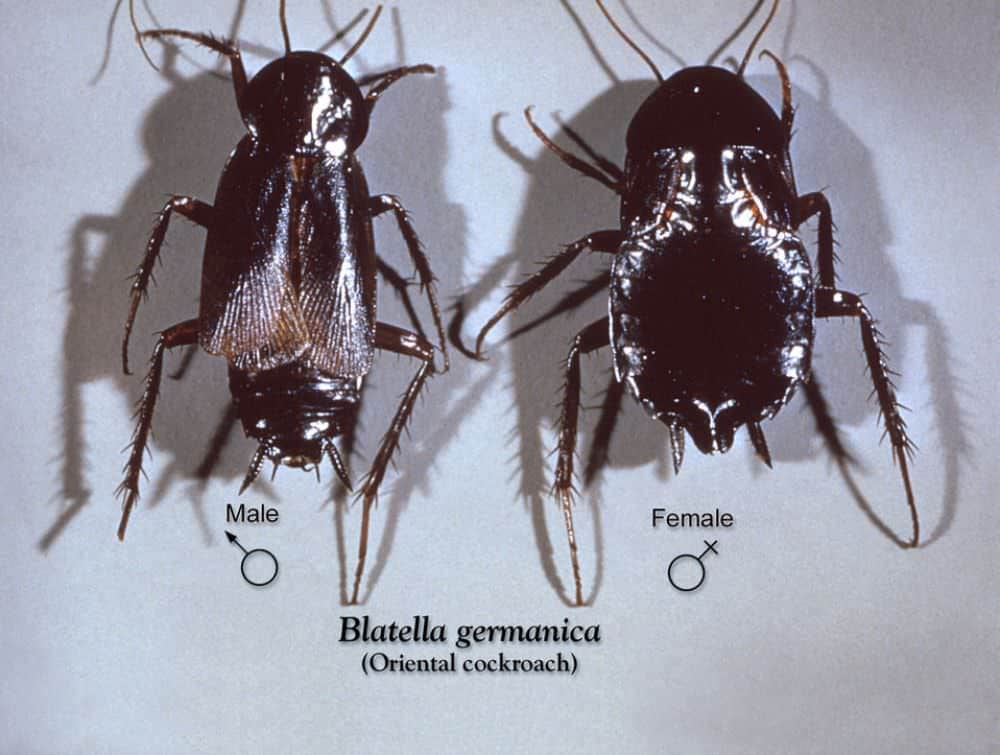American Cockroaches
There are over 3,500 species of cockroach worldwide. One of those that plagues the US is the American cockroach (periplaneta americana). This type is one of the largest roach species and is often referred to as the waterbug.
The American roach was introduced to America from ships that arrived from Africa in the early 1600s. They invade homes and businesses and have become a problem in many communities. To control a roach problem, you need to learn about the species you are dealing with. With this in mind, let’s take a closer look at these little “beasts”.
What Do American Roaches Look Like?
American cockroaches have three stages to their life cycle, the same as other roach species. With each stage, their appearance changes. To identify if your problem is an American roach problem, you should know what to look for.
Eggs
Around a week after mating, a female will produce the ootheca. This is a purse-shaped casing. It is made with proteins that the female produces and hardens to protect the eggs.
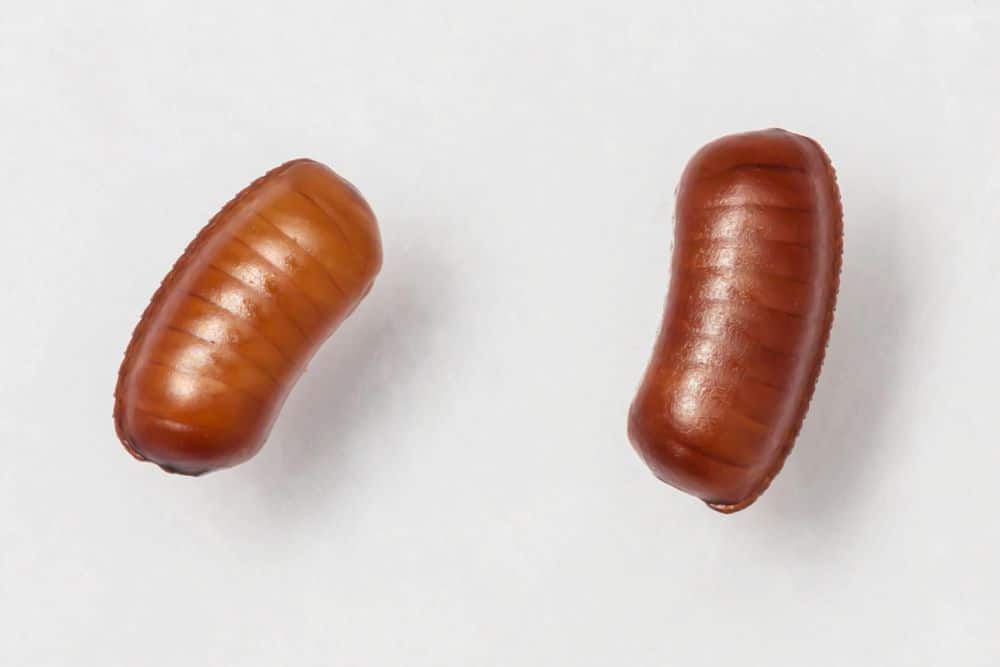
Each case will contain an average of 16 eggs; the female produces these monthly for around ten months. During the peak of the reproductive period, a female can produce as many as two oothecae each week.
Within a day or so of it being formed, the female will deposit the ootheca in a hiding place, close to a food source. She may glue the casing to a surface. She does this by using a secretion from her mouth.
Each egg casing contains enough water for the eggs to develop, therefore, no external water source is necessary. When the ootheca is first deposited it will be brown in color, yet within one or two days it will turn black. On average, the American roach ootheca measures around 0.3 inches in length and 0.2 inches high.
Nymph
Once the eggs hatch, the nymphal stage commences and the roach begins the journey into adulthood. An American roach nymph will molt between six and fourteen times during this period, with each molt referred to as an “instar.”
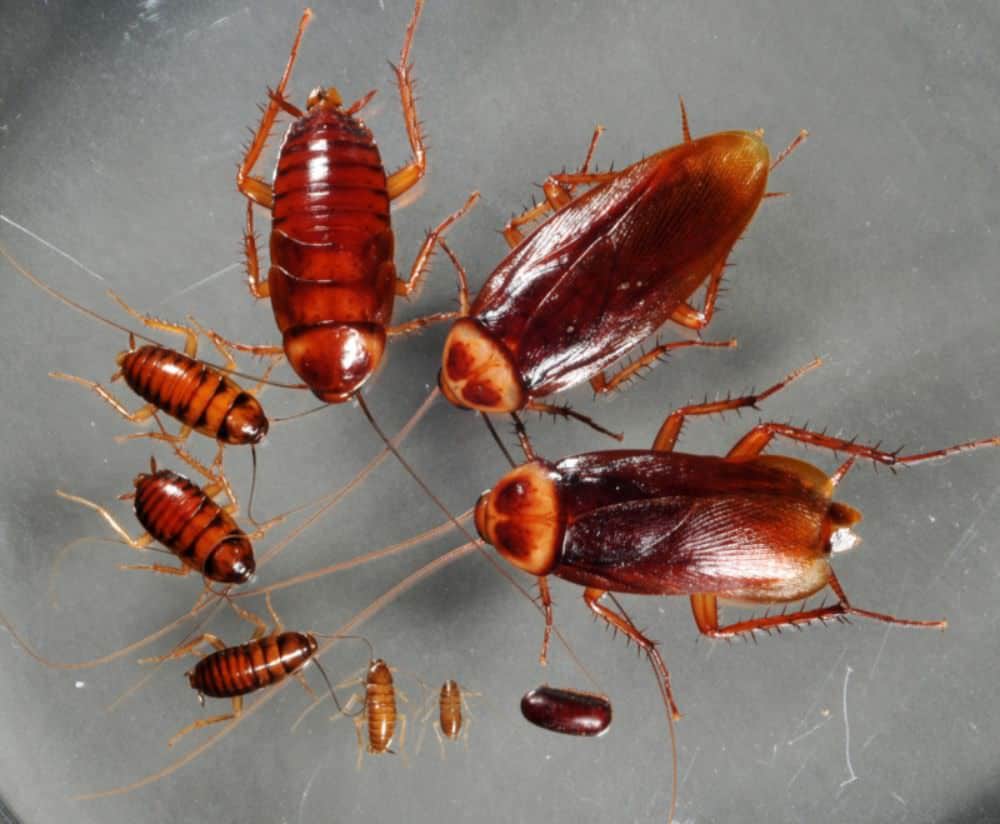
After hatching (the first instar), the baby roach will be white and then turn to a grayish brown color. With each molt, the nymph becomes white again, before quickly turning a reddish-brown color. The rear of the abdominal and thoracic segments are a darker color.
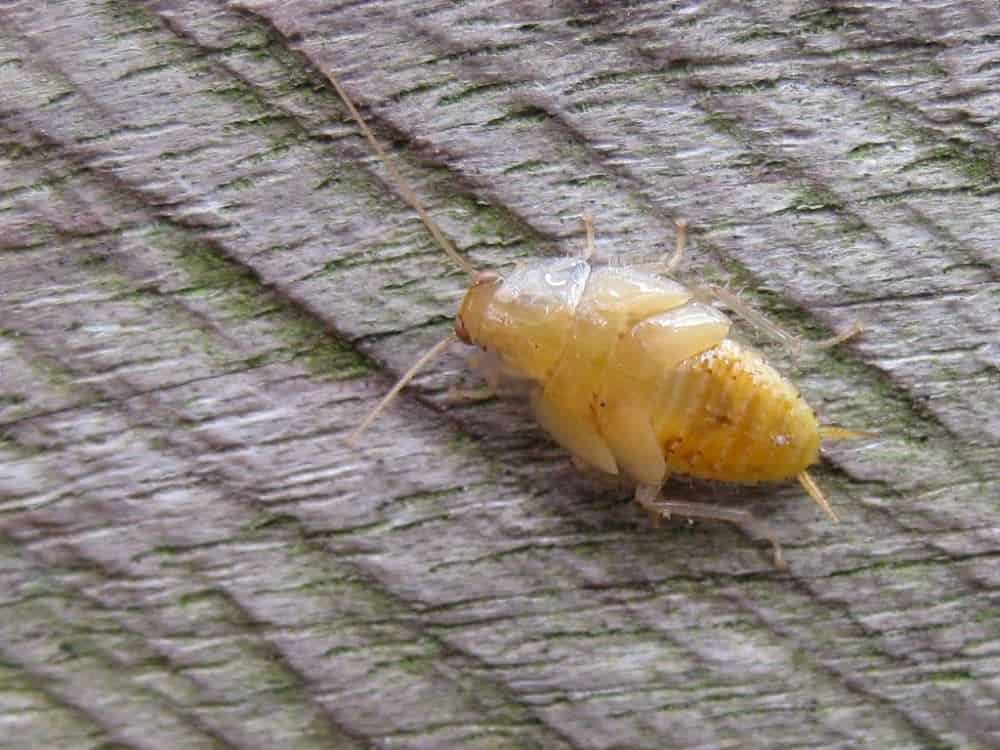
During the nymphal stages, the wings are not yet developed. It will be around the third or fourth instar when the wing pads become clear.
To survive, the nymphs actively forage for food and water. The development process from eggs to adult roaches can take around 600 days, depending on the surrounding environment.
Adult
To determine an adult American roach, you will be looking for a reddish brown insect. You can also identify them from the light brown or yellow band on the back of the head, which is shaped like a figure eight.
The females are not as long as the males. This is because the wings of the male roaches extend beyond the abdomen. American roaches can measure between 1¼ inches to 2⅛ inches in length.
Both males and females have a pair of jointed cerci, which are at the tip of the abdomen. The male cerci will have 18 to 19 segments and the females 13 to 14. The males also have a pair of styli on their abdomen, distinguishing them from the females, who don’t have these.
How Common Are American Cockroaches?
The American roach is not the most common roach in the States, that questionable ‘honor’ is reserved for the German roach and the brown-banded cockroaches. However, where the American cockroach lacks in numbers, it makes up for in size, being much bigger than its competitors.
American roaches can be found worldwide. They are transported around by commercial means. They may infest cargo or ships and vehicles, which then move from place to place. American roaches can survive both outdoors and indoors.
This species is the most common roach found in the sewer systems of many cities. They are particularly common in the sewers of the Northern States. American cockroaches can move very fast, you will often see them scurrying away into a dark corner if you enter a room.
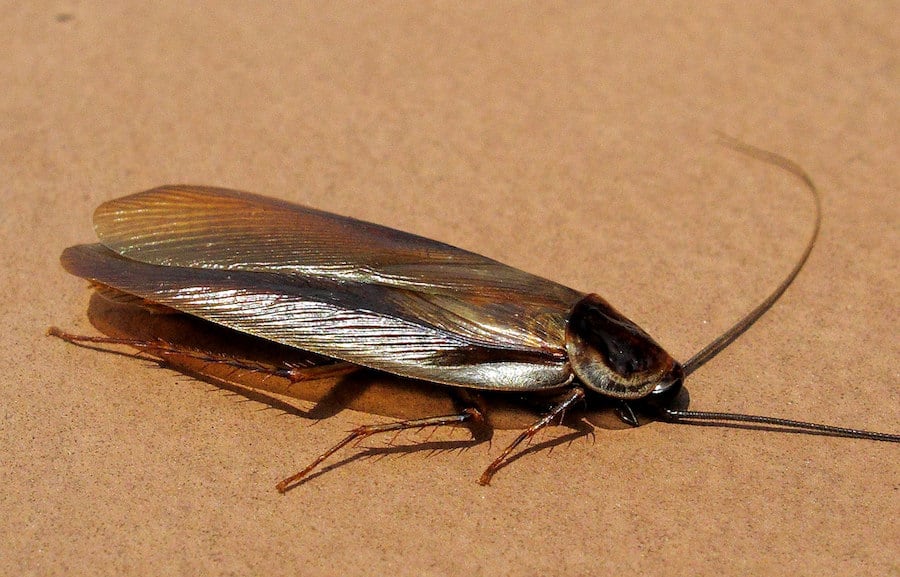
American cockroaches can survive much longer than other species of roach. They can live up to two years if the conditions are favorable. During the summer months, they can be spotted in large numbers in alleyways and yards.
Can American Roaches Fly?
Many species of cockroach are equipped with wings, but not all species can fly. The brown-banded roaches have wings, yet it’s only the males of the species that are capable of flying. The oriental roach also has wings, although, is not capable of flight.
When the American roach is in the nymphal stages, its wings have not yet developed, thus being unable to fly. As the nymphs become adults, their wings develop and they can then take flight.
Their wings will only allow them to fly short distances, however. When starting from a high point they can travel further, still this is by gliding rather than flying. Flying is not one of their strongest traits, so it is rare to see them doing it.
American roaches are able to move much faster on foot, therefore, they prefer this method of getting around rather than flying. When they do fly, it is usually to travel directly to a specific location a short distance away.
American roaches can be found across the States. You are even less likely to see them flying in the Northern States though, due to a cooler climate. They prefer flying in warm temperatures and they will only usually fly at night.
One of the main reasons the American roaches choose to run rather than fly is their size. Cockroaches are quite large compared to other winged insects. Their large body mass is not beneficial when it comes to maneuverability or speed for flying.
As a large insect, which is flying slowly, they would be the perfect prey for bats and birds. Their legs are much more effective in helping them to escape danger.
Most roach species are some of the fastest running insects. They are able to travel relatively long distances in only a few seconds.
American roaches have been seen running almost 60 inches per second. Proportionally, the distance and speed they travel is three times that of a cheetah, which is recorded as the fastest land mammal.
Where Do American Roaches Live?
Although named the American roach, we already know that the species wasn’t originally a native of America. They were introduced to the country from Africa. They have now migrated worldwide and prefer warm, dark, and damp environments. Ideal temperatures for their long life are between 70 and 80 degrees Fahrenheit.
These roaches are peridomestic, meaning they will normally be found living outdoors. They are often found in shady areas and other places such as:
- Hollow trees.
- Sewers.
- Mulch piles.
- Wood piles.
- Flowerbeds.
- Steam tunnels.
- Drainage systems.
When they choose to move indoors, they are more likely to opt for large buildings or commercial units. They are unlikely to choose a house unless there has been heavy rain, or if food is in short supply.
They are often discovered infesting:
- Hotels.
- Restaurants.
- Hospitals.
- Bakeries.
- Storage units.
- Grocery stores.
A common place to find them is anywhere that food is stored or prepared. Basements of buildings provide perfect areas for their populations to thrive.
Infestations can reach up to 5,000 or more if they have a suitable climate and a plentiful supply of food and water.
How Do American Roaches Get Inside?
Although these roaches prefer to live outdoors, when they feel the need to take shelter or forage indoors, there are many ways for them to enter homes and buildings.
American roaches can enter through gaps under doors, open basement windows or via the garage. They will also enter inadvertently when brought in with the belongings of humans, such as furniture items and grocery bags.
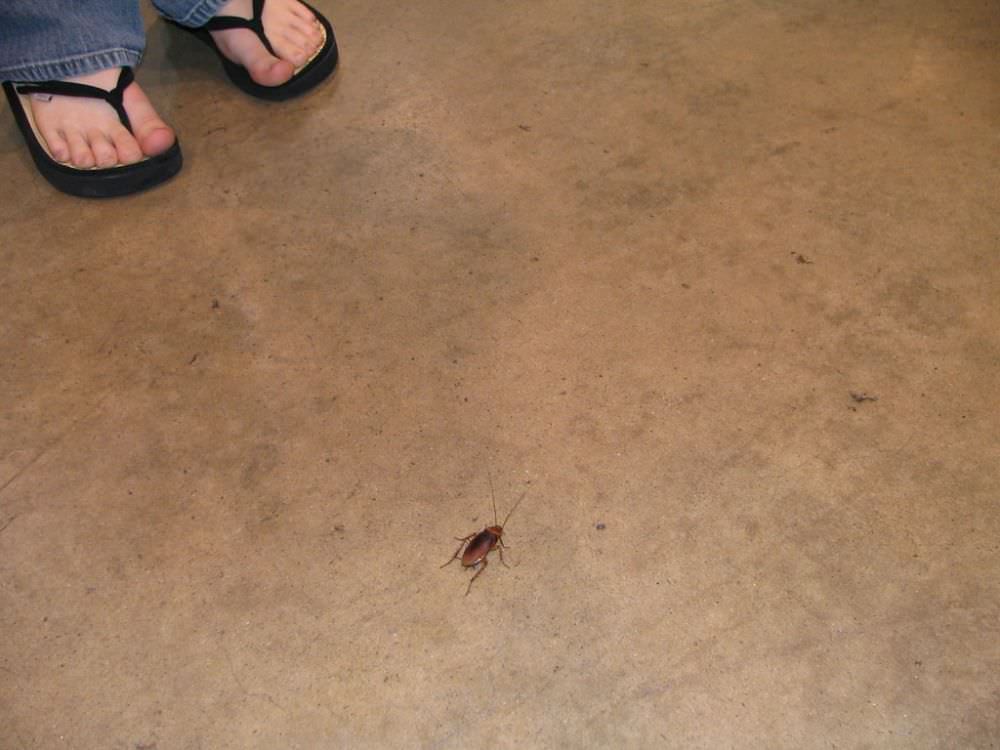
Another easy way for them to enter your home is by coming up through the sewer system, via drains and pipes.
Trees with overhanging branches growing close to the house, or climbing shrubs will also provide access. They are sometimes found high up in attics and underneath the roof shingles.
When invading homes, they will head for kitchen, bathroom, basement or laundry rooms. During warm weather, mass migrations could take place and this will see large numbers moving in.
How to Get Rid of American Roaches
Cockroaches are dirty pests that can spread disease, cause allergies and contaminate food. They pick up germs and bacteria on their legs and bodies. This happens as they crawl through sewage and decaying matter.
Roaches are reported to spread around 33 different types of bacteria, including:
- Salmonella
- E-coli
- Dysentery
- Parasitic worms
- Cholera
- Leprosy
- Typhoid fever
The saliva, feces, and urine of American roaches contain allergen proteins. These are known to cause allergic reactions and, more specifically, trigger asthma. They transfer these diseases through contact with food and cooking surfaces.
Identify the Species
Finding out the species of your adversaries will help you choose appropriate methods to deal with them. Visual sightings are the best way to help you identify which type you are dealing with. The American cockroach is quite elusive and not always easy to identify by sight alone. They only come out at night and move very fast when disturbed.
To determine if you have an American roach problem there are other things you can look for.
Droppings
They will leave their droppings close to the dark areas where they hide. Places you may find droppings are:
- Behind appliances
- Basements
- Pantries
The droppings are small and can be mistaken for mouse droppings. The droppings of an American roach has ridges on the sides, and the ends of them are blunt. Mouse droppings have pointed ends and often have hairs in them from when they groom themselves.
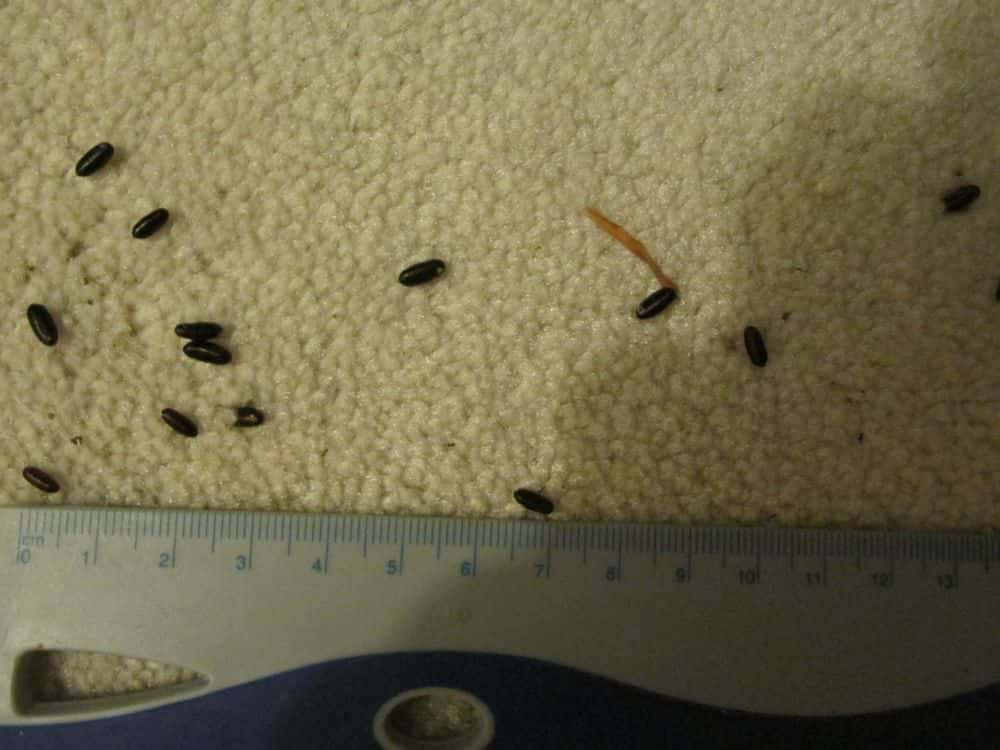
Ootheca
You could find egg casings deposited in basements, kitchens or laundry rooms. The females attach them to hidden areas such as:
- Behind appliances
- Under cabinets
- In items stored in garages
Finding egg casings is a very clear sign that you have an infestation. The appearance of the casing can also help you identify the species you are dealing with.
Odor
When a number of roaches are present, they can give out a certain odor much like a musty smell. This is caused by a chemical that the roaches produce. The chemical is an aggregation pheromone. The odor caused by this chemical is what makes the roaches stay together in their groups.
The chemicals they release can also change the flavor of food when it is contaminated by them. As populations increase, the odor becomes clearer and people often realize they have an infestation by noticing this musty kind of smell.
Sticky Traps
To help with identification, you can also use sticky traps. Place them around the building, in areas where there has been evidence of roaches. Place them near walls and in corners, or on shelves and under/behind appliances.
Doing this will allow you to find out what species of roach you are dealing with. It will also give you an idea of how big the problem is.
Maintenance and Repairs
You need to make sure your home is not attractive for roaches. Keep up with household chores and make sure spillages and crumbs are cleaned up. All foods should be stored correctly in sealed containers, and don’t leave dirty dishes overnight.
Make some repairs around the home to prevent the cockroaches from entering in the first place. Caulking is one of the main things to concentrate on. You want to eliminate access to areas where cockroaches may harbor themselves.
Areas to consider are:
- Closets
- Cabinets
- Under sinks and baths
- Around pipework
- Cracks in doors and door frames
- Window frames and sills
Make sure these preventative measures are kept up at all times and not just when roaches are evident. Doing this will help curb any future infestations.
If any new items of furniture are brought into the home or something is brought in from storage, check it out. Look for egg casings or live roaches, to make sure you are not introducing them into the home with the new item.
Control Measures
Once you have identified the species you are dealing with, it’s time to deal with the infestation. There are many treatments which you can choose, though they need to be used correctly.
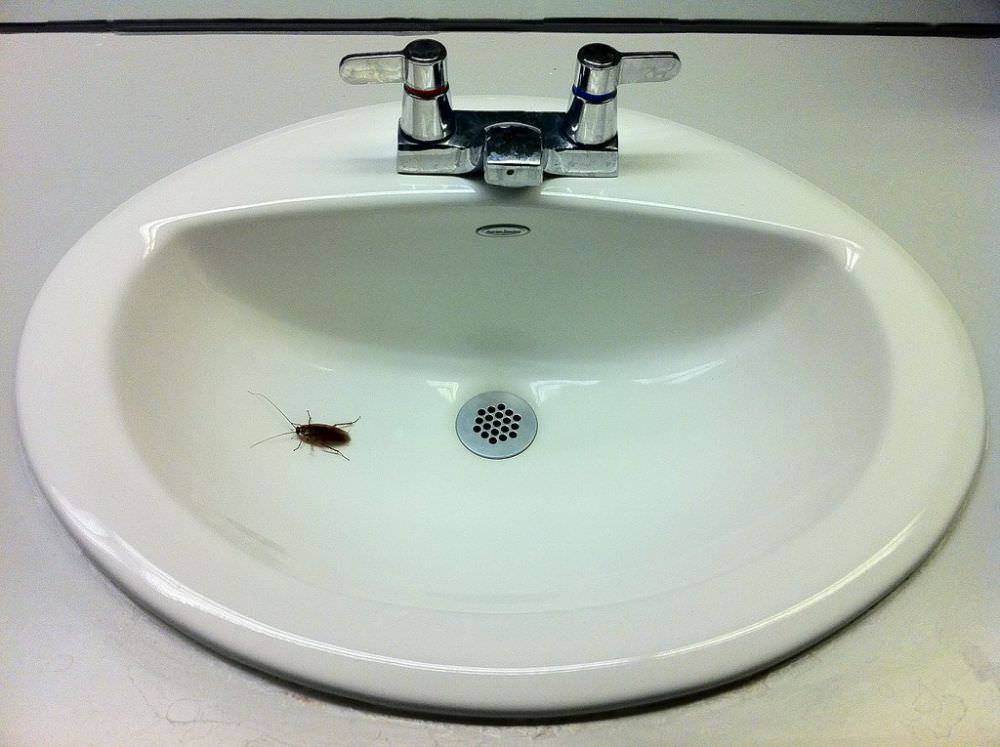
Make sure you’re using the correct concentrations and amounts. Using incorrect products could result in a danger to yourself, your children or pets. Follow all of the manufacturer’s instructions and adhere to any safety precautions.
Lure Traps
Cockroach nests may not be inside your home. The nest could be in neighboring areas and they are only entering your home for food. If this is the case, lure traps are ideal.
They include pheromones and attractants that are appealing to the roaches. The traps attract them to enter, with the promise of food inside. Once roaches enter, they become stuck to the adhesive surface and are unable to escape.
These types of trap are also good when dealing with roaches coming in from sewers. You can place them close to areas where the roaches are entering, such as pipes, drains, or manholes.
Gel Insecticides
Gel insecticides are useful for medium-sized infestations. If you have a large infestation, they can be used as an extra control measure. The gels include an attractant, which the roaches will eat. This then works to destroy nests, through a cascading effect.
When the roaches eat the gel it acts slowly to kill them. This allows them to move back to the nest before dying. Other roaches will eat the carcasses of their dead housemates, therefore, ingesting the poison also.
Each cockroach that takes the gel can kill up to 40 others, through contact and cannibalism.
Using this type of product offers great advantages. It is odorless, non-toxic to humans and lasts up to four months. It is very simple to use and often comes loaded in syringe applicators, so you can target hard-to-reach places.
All you have to do is apply small dots of gel, straight from the syringe to the places where roaches frequent. The dots only need to be the size of a grain of rice and should be spaced according to the instructions.
The number of dots you apply will vary, depending on the size of the infestation. If the infestation is small, you should concentrate on kitchens and bathrooms. These are the most common places to find roaches searching for food and water.
Other places to apply the gel are:
- Around water pipes on the outside of the building
- Inside cupboards, drawers and cabinets
- Behind or under electrical appliances
- Behind items of furniture
- Near where garbage bins are kept
Using gel allows you to get the bait into areas where other insecticides cannot reach, such as cracks and crevices in walls.
Sprays
Some insecticides can be dissolved in water and used as a spray. Commercial companies will use specific spraying machines for pest control, yet you can also make them up in normal spray bottles at home.
They are usually diluted in concentrations of between 1 and 5 percent. Ensure you follow the instructions carefully, to get the right dilution for the area in which you intend to use it.
There are two types of spray. One works slowly, while the other gives a more immediate effect. The slower type is often the one used indoors and will work over 3–4 weeks.
Slower working products are more effective indoors, because there is less chance of them being washed off. They have a weak odor, thus they shouldn’t cause too much of a problem or inconvenience for residents.
Fast acting sprays almost inevitably have a powerful smell. The odor irritates the cockroaches and entices them out of their hiding places. Once out of their hiding places, they die when they come into contact with the surfaces covered by the sprayed substance.
If you have a large infestation you will need to repeat the treatment within a few days. You can also use the spray alongside gels, but be aware that the gel needs to be used after the spray. If the spray contaminates the gel, it will no longer act as an attractant to the roaches.
After spraying, most manufacturers recommend that you leave the area for 2-3 hours or more. The windows can be left open to help with ventilation.
When using a spray you should take precautions. You need to use a mask and gloves to protect yourself from contact and inhalation.
If infestations are in places that you cannot reach, you will need to use a fogger treatment. This is done using special devices that create thin particles of the insecticide. The particles are able to penetrate all cracks and crevices.
If you don’t want to hire professionals to apply the foggers, there are aerosol treatments available. Before using these treatments yourself though, be mindful of whether it is safe to use in your home. Remember, the insecticide will come into contact with all surfaces.
Warnings
Before using any type of pesticide, always make sure you read the instructions carefully. Follow all the safety precautions stated by the manufacturer. After using the products, containers need to be disposed of correctly. Incorrect disposal could lead to contamination of water sources or soil.
Consider whether the treatment you use will require you to vacate the premises for a period of time. If it is necessary to vacate, make sure you put plans in place for this before use. Also consider children, pets and wildlife, before using any treatments, to ensure the safety of all.
Summary
Cockroaches are not something anyone wants to find in their home. American roaches are the biggest, live the longest and move very fast. The thought of sharing your living space with this species is even less appealing.
Fortunately, American Cockroaches do normally prefer to live outdoors. It is during the colder months that they will probably decide to try and move inside. Be prepared, and follow our advice to prevent an infestation in the first place.

